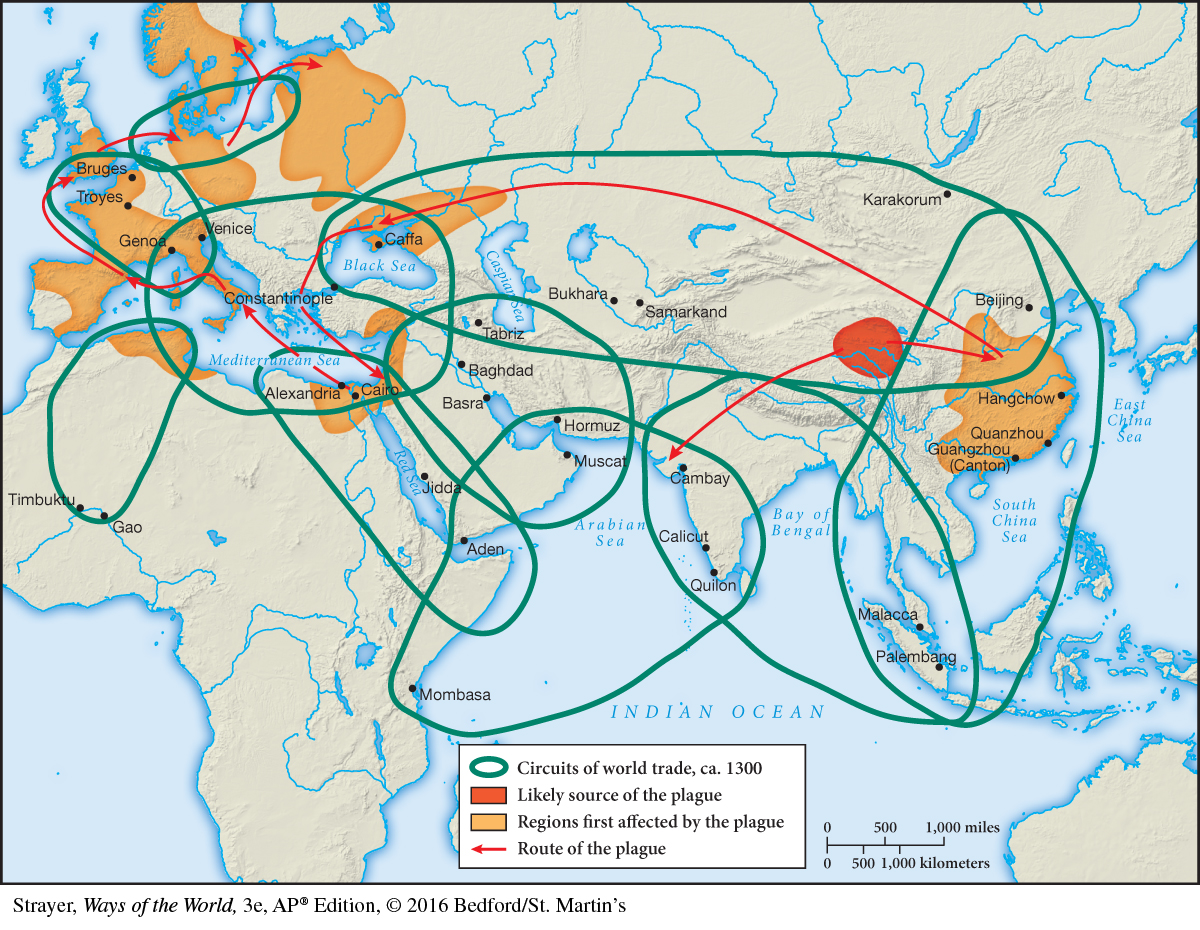Toward a World Economy
Guided Reading Question
▪CONNECTION
What kinds of cross-
The Mongols themselves did not produce much of value for distant markets, nor were they active traders. Nonetheless, they consistently promoted international commerce, largely so that they could tax it and thus extract wealth from more developed civilizations. The Great Khan Ogodei, for example, often paid well over the asking price to attract merchants to his capital of Karakorum. The Mongols also provided financial backing for caravans, introduced standardized weights and measures, and gave tax breaks to merchants.
AP® EXAM TIP
The features and extent of the political, economic, and cultural conditions established by the Mongols are “must know” material for the AP® exam.
In providing a relatively secure environment for merchants making the long and arduous journey across Central Asia between Europe and China, the Mongol Empire brought the two ends of the Eurasian world into closer contact than ever before and launched a new phase in the history of the Silk Roads. Marco Polo was only the most famous of many European merchants, mostly from Italian cities, who made their way to China through the Mongol Empire. So many traders attempted the journey that guidebooks circulated with much useful advice about the trip. Merchants returned with tales of rich lands and prosperous commercial opportunities, but what they described were long-established trading networks of which Europeans had been largely ignorant.
The Mongol trading circuit was a central element in an even larger commercial network that linked much of the Afro-Eurasian world in the thirteenth century (see Map 11.2). Mongol-
AP® EXAM TIP
Map 11.2 is one of the most important in this book. Study its economic and social links.
